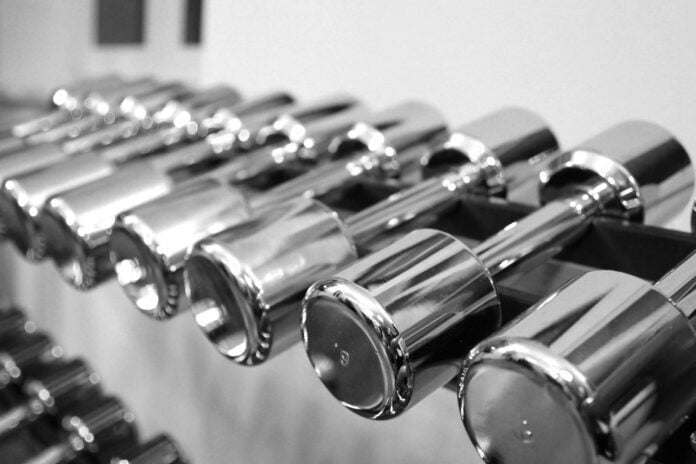Outside of big arms, one of the first things that people immediately notice about your physique is the size and shape of your chest. Some of you might have had a little success in this area but many run into a brick wall. To really build up your chest, we need to go back to the basics and learn the fundamentals of the chest region. Yes, that’s right, we might just have to bust out our anatomy 101 books and take a look at the muscles and movements of this region. While mildly technical at times, you will be better equipped to go earn the chest you’re after.
Basic Anatomy
The human chest is made up of two major muscle groups: the pectoralis minor and the pectoralis major. The serratus anterior is sometimes also considered part of the chest because it attaches to the ribs near the pectorals. The chest is used for pushing moves like dips, bench press, and pushups. In order to build your chest, it’s imperative that you understand the location and function of these muscles as well as the level of volume and workload these muscles will demand in order to train for size.
Location and Function of Chest Muscles
The pectoralis minor is a small, thin, triangular-shaped muscle with three heads, each of which originates at the fifth, fourth, and third ribs respectively, and attaches at the coracoid process of the scapula. It runs underneath the pectoralis major and is responsible for the abduction, depression, and downward rotation of the scapula.
Pectoralis Minor
The pectoralis major is a large fan-shaped muscle that makes up the majority of your chest. There are two heads: the clavicular head and the sternal head. The clavicular head originates at the anterior side of the clavicle and attaches to the upper part of the humerus (upper arm) right near the shoulder. It is responsible for the abduction, flexion, adduction, internal rotation, transverse adduction, and transverse flexion of the shoulder. The clavicular head of the pectoralis major forms the upper part of the chest.
Pectoralis Major – Clavicular Head
The sternal head originates at the anterior portion of the sternum and the second through the sixth ribs. It attaches to the humerus right near the shoulder. It is responsible for the adduction, extension, internal rotation, transverse adduction, and transverse flexion of the shoulder and assists with the abduction, depression, and downward rotation of the scapula. The sternal head of the pectoralis major forms the lower portion of the chest.
Pectoralis Major – Sternal Head
Moves that work the pectoralis major often work the triceps and shoulders as well. The serratus anterior also called the boxer’s muscle, originates on the second through the ninth ribs at the very side of your chest and inserts along the front of the scapula. The serratus anterior is responsible for the abduction, elevation, and upward rotation of the scapula.
How to Work the Chest Muscles
When you want to build the chest, you’ll want to hit the upper chest, the mid-chest, and the lower chest. Some people neglect working on the upper portion of the chest. The incline barbell press is one exercise that works on the upper chest.
Each person “feels” the exercise at a different angle, so you’ll have to experiment to find what works best for you. A 45-degree angle tends to work for most people because it strikes a balance between being too high (isolates the shoulders) and too low (does not sufficiently work the upper chest). You want to feel it in the upper chest, not the lower chest or your shoulders.
The mid-chest is worked using the bench press, which is an exercise most bodybuilders perform. Another exercise that works your mid-chest is the pushup. You’ll notice when someone does only bench press and no other chest exercises because he or she will have a more developed mid-chest and will not have a defined line down the middle of the chest.
The lower chest is the most neglected area of the chest. You work in this area to ensure the muscles below the mid-chest are round and full. Dips and declining presses will help to develop this portion of the chest. One final exercise that targets the entire chest is flyes. You can do incline, flat, and decline flyes to hit the upper, mid, and lower chest muscles.
Volume, Work Load, and Tension for Size
Volume training is one of the best ways to build muscle while keeping your workouts safe. Because you’re lifting the weights at a higher volume, you can use a lighter weight, which is particularly useful for those who work out at home or without a spotter. The idea is to perform many sets and reps.
The easiest way to figure out a high-volume training session is to take 60% of your one-rep max and perform 10 sets of 10 reps. Do one exercise that targets each muscle group. There’s no need to do more than one exercise; you will definitely feel your workout the next day and you will start to see improvements in muscle size very quickly, as long as your nutrition and intensity support muscle growth.
As we covered before, muscle tension leads to growth. Basically, the longer the muscle is under tension, the more force it has to produce and the more fast-twitch fibers it will recruit. A higher time under tension damages the muscle more, which leads to more growth stimulation. The trick is to find that sweet spot where you’re using the proper weight to put enough tension on the muscle and keeping that tension on the muscle in order to cause the most damage.
Wrapping It Up
In this article, we’ve covered the basic anatomy, location, and function of the chest muscles, as well as how to use weights to build size in the chest. So, chew on this mental meat I gave you, and get ready for our next installment.


